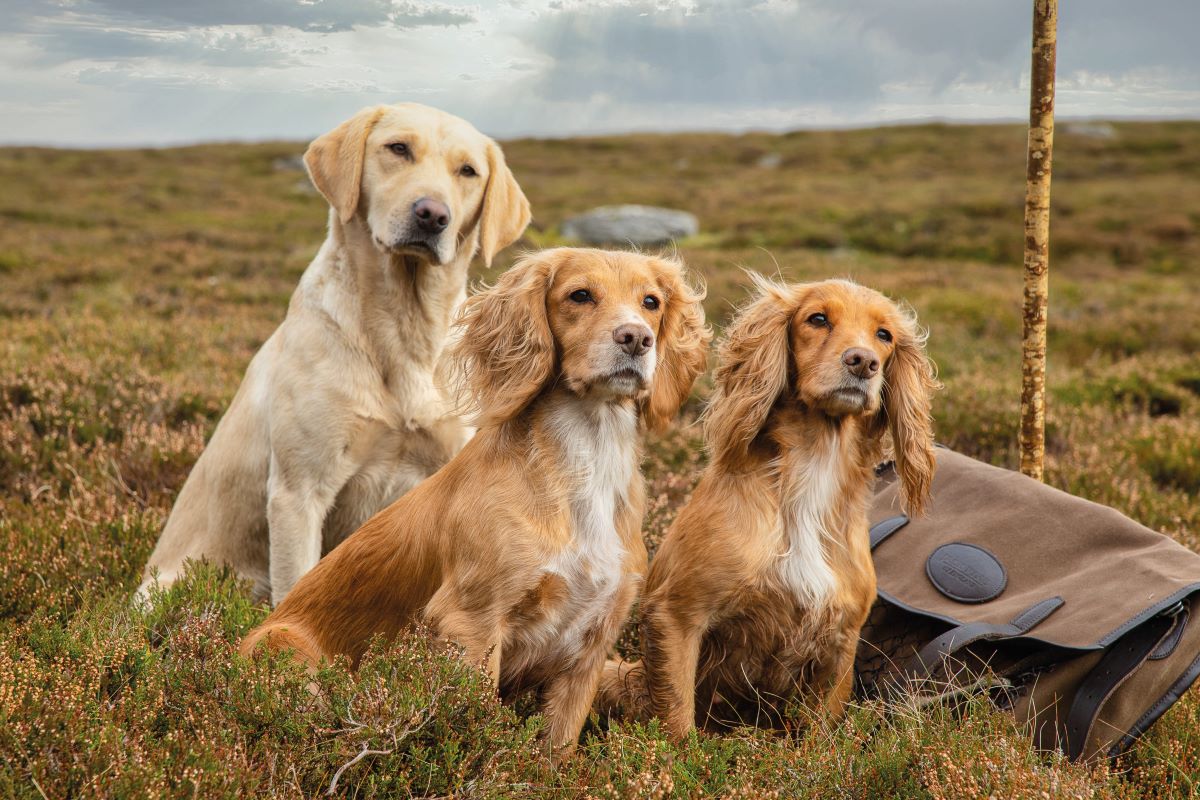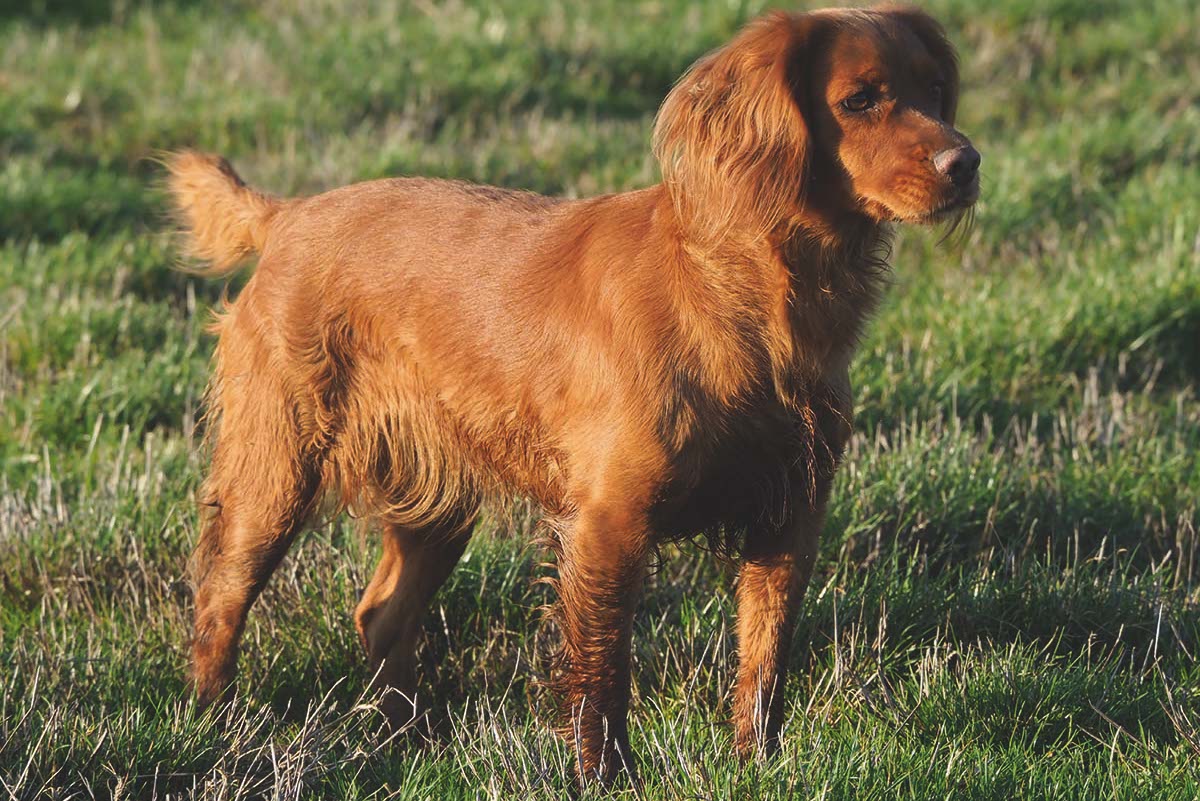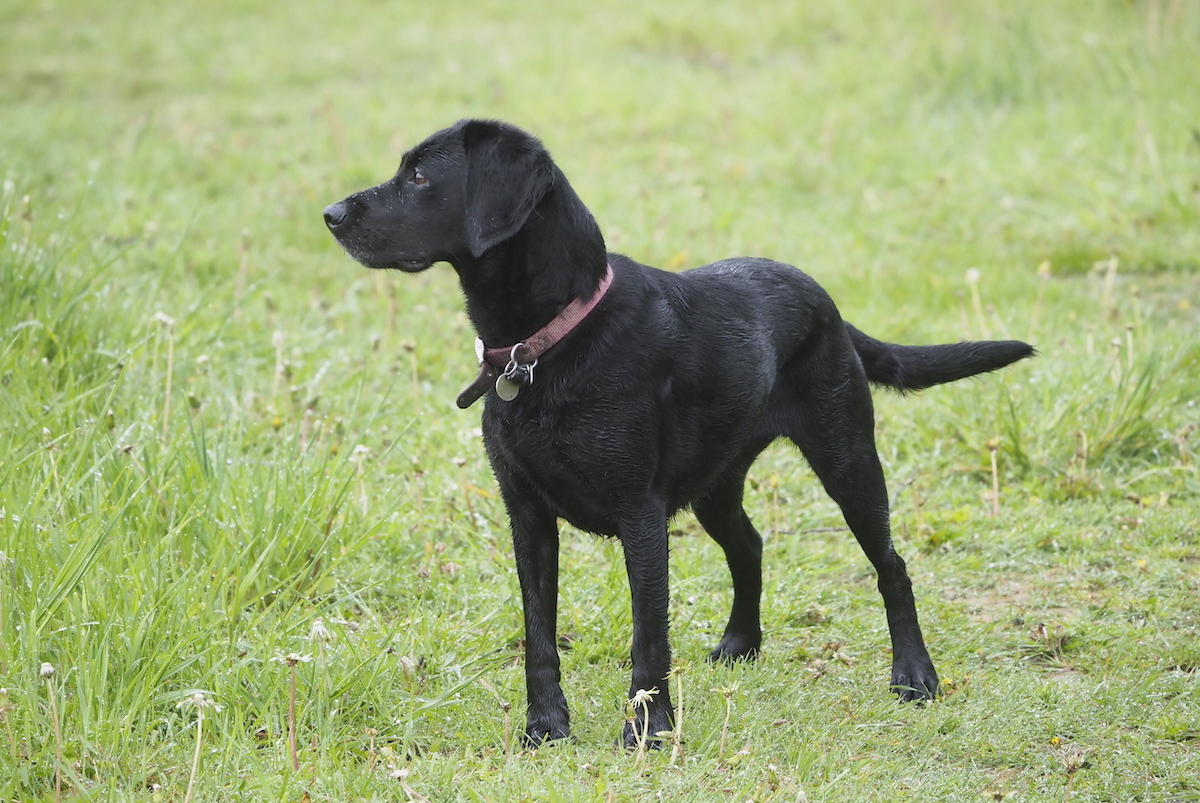Breeding cocker spaniels: here’s what’s really involved
Plenty of people like the idea of their own bitch having puppies but is it always a good idea, asks Richard Negus

Cocker spaniel puppies
The reality of breeding cocker spaniels
My phone buzzed in my pocket with an incoming WhatsApp from my wife, Clare. Her message simply read “Deed is done”. The short missive was accompanied by two photos. In both, the low mist-shrouded fields of a Lincolnshire landscape filled the background. In the foreground my beloved cocker spaniel bitch, Mabel, panted, sporting a less-than-impressed expression. She was mid-tie with a smart blue roan dog of the same ilk.
Sending me images of mating dogs isn’t Clare’s standard text, I hasten to add. They are more usually “Would you pick up some milk on your way home please?” or similar. These pictures of dogs doing what dogs do was a precursor to mayhem.
Breeding a litter of puppies is not a decision to be taken lightly, let alone breeding cocker spaniels. Months before Clare found herself chaperoning Mabel to be covered by FTAW Ardchonnel Faodalach (Jay), we had earnestly asked ourselves a series of questions. Do we need another dog? Do we know how to manage a litter? Can we find homes for the puppies? Should we leave this to the professionals? Why would we need another dog, we already own a cracker? (Read more on how to breed from a working bitch.)

Cocker Mabel’s steady temperament and strong work ethic make her the perfect foundation bitch
Contentment
I believe dogs need other dogs in their lives — they are wholly sociable creatures. Dogs love people, but if their own pack contains at least one other four-legged member they are all the happier. As you sit by the fire, observe the obvious contentment a leg-weary pair or trio of dogs share as they curl together, noisy in their dreams, sleeping off the rigours of a working day. From a practical sporting level, multiple dogs divide the workload. Above all, I had a yearning to create a line of my own and so had thought about breeding cocker spaniels.
Mabel is a fine foundation bitch. Well bred by a great friend in County Durham, she is exactly the pattern of dog I like, possessing a steady temperament and a work ethic Norman Tebbit would approve of. Why, I thought, seek a puppy bred by someone else, even from a top kennel, that only through luck may be like her?
Why not instead guarantee that at least some of the traits I so admire in my dog would carry on through her own progeny? Similarly, choosing a sire for your bitch enables you to fine-tune your requirements.
If I criticise Mabel at all, her coat is not as good as it could be. Jay, the mate I picked for her, has an excellent one. He is a field trial winner owned by Andy Robinson of Whaupley Gundogs, one of the country’s leading field trial cocker judges — Jay is the peak of cocker perfection. So we agreed we needed another dog and we chose the perfect sire to help us in our amateur dabble in canine eugenics.
There is a valid argument for saying breeding cocker spaniels should be left to the professionals. Andy notes: “Some amateur breeders simply put their bitch to any old dog, regardless of glaring temperamental or conformational faults in both, purely because they think ‘Little Molly wants to be a mummy!’ This heart-before-brain ideology is doubtless detrimental in the long term to the cocker spaniel as a breed.
“Worse still, an increasing number of unscrupulous amateurs seek to cash in on the wallet-busting prices pups make today, breeding countless bad dogs to make good money. “A professional breeder will, or certainly should, put the very best to the best,” he points out. “They will have an in-depth knowledge of multiple generations’ worth of form, temperament and working abilities of both sire and bitch, largely because they tend to own both.”
But he cautions: “The incentives for nearly all professional breeders are financial and then to a greater or lesser degree competition success. The good amateur breeder, on the other hand, is motivated by wanting to produce a carbon copy of their own ‘paragon’ bitch.”
Mabel spent her last working day of 2021 in the beating line at Rivers Hall. She then dutifully came into season on the date we expected. We paid for a progesterone test at the vets to gauge her readiness for mating. Given the veterinary green light, we excitedly phoned Andy.
He generously offered to bring the dashing Jay to rendezvous with Clare halfway between his Cumbrian home and ours in deepest Suffolk, hence why Mabel held her romantic liaison in a Fenland gateway.
Over the following weeks, Mabel grew broader in the beam. We shunned the notion of a scan — whether she gave birth to one or 10 was of no concern to us. Sex did matter, however, and we kept our fingers crossed that if she did whelp a mere singleton, it would be a bitch.
Despite having foaled down more mares than I care to remember, I have only bred two litters of dogs before. As a precaution, we rang the vet to let them know Mabel was beginning to exhibit all the signs that a pre-parturition bitch should exhibit. She nested in her whelping box, a wonderful construction that Clare had sourced from Amazon.

Puppies at 6 weeks old in whelping box
Delivering the puppies
Puppy number one came out head first. With some help from me, the tiny mucus-daubed creature slid out, black as coal with white tips to her paws. The following four pups appeared at more or less half-hour intervals — another black bitch, one lemon bitch and two lemon dogs. All suckled readily, and largely the following three weeks were salad days in the experience of breeding cocker spaniels.
The trip to the vets for docking and microchipping was a mere formality; the blind, barely mobile puppies accepted the trial without a whimper. Registration with the Kennel Club was completed; we chose Wuffingas as our kennel prefix, a Suffolk name of ancient regal line. (More about tail docking here.)

By the time they are six weeks old, the puppies are into everything – to the despair of Clare, Richard’s wife
Maternal instincts
Mabel’s maternal instincts were as natural to her as hunting up a pheasant in scrub. Poo and wee were all noisily snaffled up by this fastidious mother. Then eyes that had been sealed slowly opened. The guinea pig-like creatures transformed before our gaze into cocker spaniels. Mabel began weaning them and anarchy entered our lives.
Managing a litter in the house is no light duty. The puppies’ arrival saw Clare shut the door of her studio and hang up her potter’s apron. She adopted the role of full-time puppy nanny. Our dining room became a playground, a boxing ring and a toilet. Endless puddles and slug-like turds were wiped and sponged away by my increasingly despairing wife. She went through reams of old newspapers, diligently saved and bundled by my parents. The mop was worn to tatters by the thrice-daily dowsing the wooden floor received.
I would return from work to encounter a frazzled Clare. “You won’t believe what they have done this time,” she would begin as I pulled off my boots at the doorstep and a puppy bit my exposed ankle. The puppies were taught manners; children were not for biting, nor adults there for fighting. They met all manner of visitors, played outside, dug holes and shredded plants. They learned to come to call and were given Clare’s almost undivided attention; a level of socialisation that only a dedicated amateur breeder can provide.
Finding homes for the litter was straightforward. Mabel is something of a local celebrity. Two farming friends put their name down for pups immediately. Shooting Times photographer Callum took one look and couldn’t say no. Andy put a Suffolk-based picker-up in touch with us, with whom the fourth puppy found a fine home. Throughout, we constantly cogitated over and assessed the writhing, wriggling beasts as they played and fought and slept. We finally made our choice, which is, after all, why we embarked on this adventure — the breeder enjoys the pick of the litter.

Mabel, Richard’s constant companion, makes a wonderful mum to her first litter of pups
Eight weeks have passed and the nest is empty. Graceful Fynn and little black Willow have left to embark on their farming careers. Boisterous Bertie begins his training as a picking-up dog. The soulful Waffle is now a photographer’s muse and Blyth, beautiful, intelligent Blyth — the very spit of her mother — remains with us.
Was all the excrement and mess, the cost, the pits in the lawn and household destruction worth it? Ask me and I would unhesitatingly say yes. Ask Clare and she may mutter: “Never again.”








